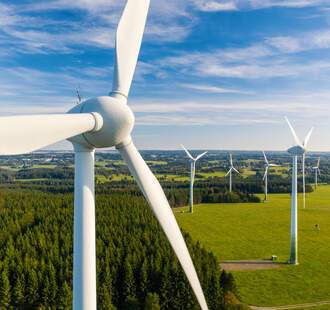- RENEWABLE ENERGY
- HYDROGEN
- BATTERY TECHNOLOGY

Onshore wind is a proven, mature technology with an extensive global supply chain and offshore wind is also expected to grow rapidly. Onshore technology has evolved over the last five years to maximise electricity produced per megawatt capacity installed to unlock more sites with lower wind speeds. Wind turbines have become bigger with taller hub heights, and larger rotor diameters. Offshore wind is also expected to grow rapidly. Deploying turbines in the sea takes advantage of better wind resources than at land-based sites. Therefore, new offshore turbines are able to achieve significantly more full-load hours depending on resource availability. Bertrand PICARD said : “Wind energy is the second most used renewable sources in the world, generating 563 GW and coming in at 24% of the world’s renewable energy generation capacity. The UK is the 6th biggest producer in the world, producing 13603 MW. Offshore wind farms are constructed in bodies of water, and power the equivalent of 4.5 million homes in the UK alone. Onshore wind farms, whilst important, delivered only around 10% of UK energy in 2020. Examples of wind energy technologies that have received the Solar Impulse Efficient Solution Label include: The Haliade-X wind turbine, a 12 MW capacity wind turbine, solving the challenge of high clean electricity costs with a larger wind turbine that requires less installation on a single wind turbine for the same wind farm total capacity Wind Tulips - Small wind turbines combining efficiency, low noise, synergistic clustering, bird friendliness, and artistry. This technology uses innovative aerodynamics and design to make small wind turbines that can be used near people and buildings. Wind Turbine for Telecom Towers - A solution for existing telecom towers structures using wind-solar integrated hybrid energy to reduce operational expenses.”